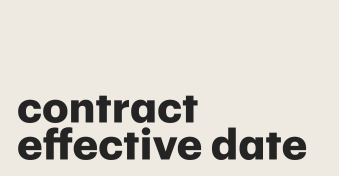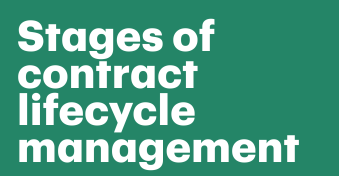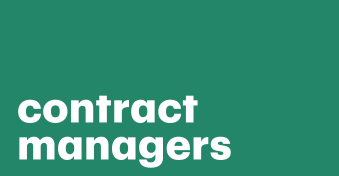Poor or absent contract management poses serious business issues.
These include misunderstandings due to inconsistent contract clauses, poor interdepartmental and external communication, insufficient collaboration, manual paperwork, and unsystematic contract tracking.
As a result, businesses face efficiency reductions and delivery delays, higher risk of human errors, missed deadlines, non-compliance, and unfulfilled obligations.
It’s important to not just take your contracts under control as it comes, but rather do so in the most efficient way.
Below, we’ll define the stages and key components of contract management, share the best practices of an effective management process, and take a look at some examples of success for selected business domains.
Let’s go!
Best practices of successful contract management
Let’s begin by reviewing the most performing approaches to contract management.
We’ve divided them into several sensual groups: standardization, centralization, automation, and integration, as well as monitoring and analytics.
1. Standardization
The process of establishing consistency across all your contracts can be called a standardization of your contract management.
This serves for reducing errors, misunderstandings and potential legal disputes, as well as for increasing overall efficiency.
2. Create templates for your contracts
Having a set of pre-approved contract templates for various types of agreements helps save time and effort, as well as reduces the risk of inconsistencies or mistakes.
Your templates should cover the essential elements of each contract type, including standard clauses and terms and conditions.
Ideally, all repeating elements and “fill-in-the-blanks” for any other elements must be pre-developed.
They should be easily customizable so that a sales representative can instantly edit these elements and then paste them into documents without breaking their structure and format.
3. Set and maintain consistency in language and clauses
In order to avoid ambiguous interpretation of contract clauses, go all out to use clear, concise, and definitive language that all parties involved will understand equally.
Define all the clauses addressing common contractual issues, such as payment terms, confidentiality, and dispute resolution, and then elaborate on their standard formulations.
Making it once, you’ll save a lot of time on both further crafting your docs as well as conducting negotiations.
Adhere to industry-specific regulations and norms
Each industry has its own set of regulations, norms, and best practices that must be taken into account when drafting contracts.
Aligning contracts with these requirements reduces the risk of legal or regulatory issues.
For example, healthcare contracts must comply with HIPAA, and educational ones with FERPA regulations.
When a contract doesn’t comply with legal regulations, this means it doesn’t adhere to applicable laws and rules and cannot be enforceable.
Which, in its turn, can lead to fines, penalties, or even contract invalidation.
Keeping your contracts compliant starts with analyzing the regulative law they must adhere to.
Then, you should standardize your contract templates or special clauses that must be explicitly added to contracts for their compliance.
Finally, you should train your staff on compliance requirements and regularly review the whole process in order to keep your approach to compliance correct.
Using a properly set up contract management system will help you effectively track and manage compliance requirements.
4. Centralization
Under centralization, we mean drafting, saving, editing, and signing all your contracts within a single work environment.
This is one of the most efficient ways to simplify access to your documents from anywhere — you’ll drastically speed up the time required to search a specific document, increase security, and reduce the time required for creation and negotiation.
This also results in fewer errors, such as lost documents, duplicates, inconsistencies, and insufficient document oversight.
5. Use a contract management platform
Using a unified software package rather than a heap of unbound tools means a seamless and instant transition between different contract management activities.
For instance, with convenient and secure file storage, you don’t have to copy documents from one environment to another to show them to someone and then copy them back to save changes.
Like how a Swiss Army knife has a blade for all occasions, a good contract management suite will likely address any contract-related need using a component tailored right for this purpose.
Let’s review the difference based on the features offered by PandaDoc.
With more old-fashioned approaches like paper document management or unsystematic usage of disparate software for each separate activity, you always lose a lot of time applying so much extra effort.
For example, you have to create your document using a text editor, then exclude all the personal data in order to comply with privacy regulations, then find and use any reliable third-party file-sharing system, send your file via email, or even print it and send a paper copy.
Then, once the second party has introduced some changes, you must get the file and review them step-by-step.
And since this is not the end, it’s quite easy to get into a mess and make a mistake with such an inefficient, complex process.
With an all-in-one contract management solution, you’ll get completely different results with a secure and efficient single working environment.
- Start with choosing an appropriate template for drafting your ready-made contract in minutes.
- By securely saving your contract file in the Document Repository, you can then share it and grant the second party the right to suggest edits or to review and approve your own ones much faster. With a version history, you can return to previous revisions to compare changes and restore the best-performing document version if needed.
- A notification system, instantly alerting you about each change, is a reliable way not to overlook significant contract modifications — and to review and address them as soon as possible.
- Finally, once the negotiations are finished, use an integrated free e-signing feature to sign agreements electronically in minutes (rather than wait for a hard copy to be delivered for days or even weeks) and then send it back.
As a result, you can cut the average document time creation twice, as well as raise the close rate by 36%.
We recommend you schedule a free 15-minute demo covering your immediate needs and check how the suite fits your context.
6. Streamline your communication and collaboration with the other parties
When multiple stakeholders and departments are working on a contract, using a single tool for communication and collaboration makes things much easier.
Once a single tool for contract negotiations is clearly set, it’s easier to track any changes, keep the conversation process under control, and not lose its important parts due to them arriving via different channels.
Sometimes contract management platforms don’t have special communication tools in place, like built-in corporate messengers or chats.
That’s where integrations with services like Slack come in handy, allowing you to track and discuss any document changes in a dedicated channel or by using direct messages.
7. Reduce storage redundancy
Unlike the centralized approach we’ve mentioned above, the non-centralized one often results in producing extra document copies, which then must be tracked and eliminated.
Here’s how this usually happens: you save the first copy of the just-created contract file to your local storage, then create the second copy on a mail server for sending or sharing this document, then receive the third copy of the reviewed file from the second party, then… the list of copies you have to control within a single contract lifecycle can be fairly long, to say the least.
Instead, you can use a single centralized storage where every document can be accessed by anyone and from everywhere, without having to create any copies.
Such a unified storage, coupled with an efficient search feature, helps to remove redundancy, increase security, switch through the versions effectively, and avoid frequent errors and unintended inconsistencies.
8. Monitoring and analytics
Giving careful consideration to your contract performance and its continuous analysis is an effective way to make informed decisions on process improvements.
This also helps to manage specific deals more accurately, shortening the contract lifecycle, and increasing the overall performance of your company.
9. Keep the contract performance under control
Continuous contract execution control is beneficial for both parties involved.
For the promisor party, this is a way to show their reliability to build stronger relationships with another party, ensure they receive payments on time, and make cash flow more predictable.
For the promisee, it acts as a guarantor they receive the expected value for the money they pay, for early identification of any possible delivery issues, as well as for understanding the real performance of a promisor and helping decide about further contract renewal.
10. Analyze key metrics and make informed decisions
A crucial aspect of enhancing your contract management experience is to set, track, and analyze its KPIs continuously.
The most popular metrics used as contract management KPIs are contract cycle times (should decrease over time), contract value (should increase), savings through negotiations (should increase), the number of contracts per contract manager (should increase), and dispute frequency (should decrease).
This will help you identify trends, pinpoint areas for improvement, and ensure that contractual obligations are being met.
For example, if a specific vendor frequently fails to meet delivery deadlines, it should be taken into account during any further negotiations with them.
Or, once any clause leads to disputes much more often than the others, it should be revised.
Wrapping up
Effective contract management is essential for businesses, because it:
- Increases business efficiency, streamlining contract creation, execution, and monitoring processes, reducing administrative burdens, and speeding up contract cycles.
- Helps identify, assess, and mitigate contractual risks, protecting the company from potential legal disputes, financial losses, and reputational damage.
- Improves compliance with relevant industry or local regulations and standards, reducing the risk of non-compliance penalties, fines, or contract invalidation.
- Promotes an atmosphere of transparency and trust between contractual parties, fostering stronger, more productive business relationships.
- Refines negotiation for obtaining better contractual terms and avoiding unnecessary costs or penalties related to contract breaches or non-compliance.
- Informs strategic decision-making and process improvements.
- Facilitates ongoing monitoring of contract performance with early issue detection and cost effectiveness control.
We offer you one of the leading contract management technologies to help businesses stay competitive.
Sign up for a free demo or start a 14-day free trial in order to get a better understanding of the opportunities PandaDoc can bring your company in terms of contract management!
Disclaimer
PandaDoc is not a law firm, or a substitute for an attorney or law firm. This page is not intended to and does not provide legal advice. Should you have legal questions on the validity of e-signatures or digital signatures and the enforceability thereof, please consult with an attorney or law firm. Use of PandaDocs services are governed by our Terms of Use and Privacy Policy.


